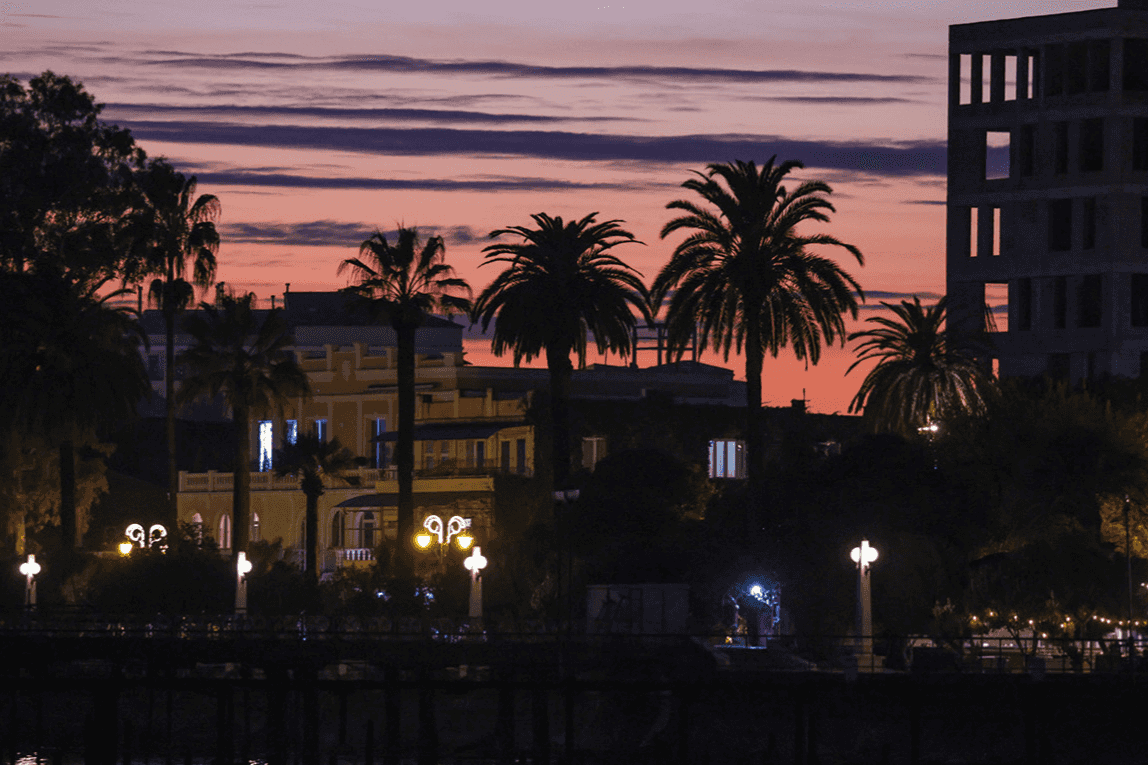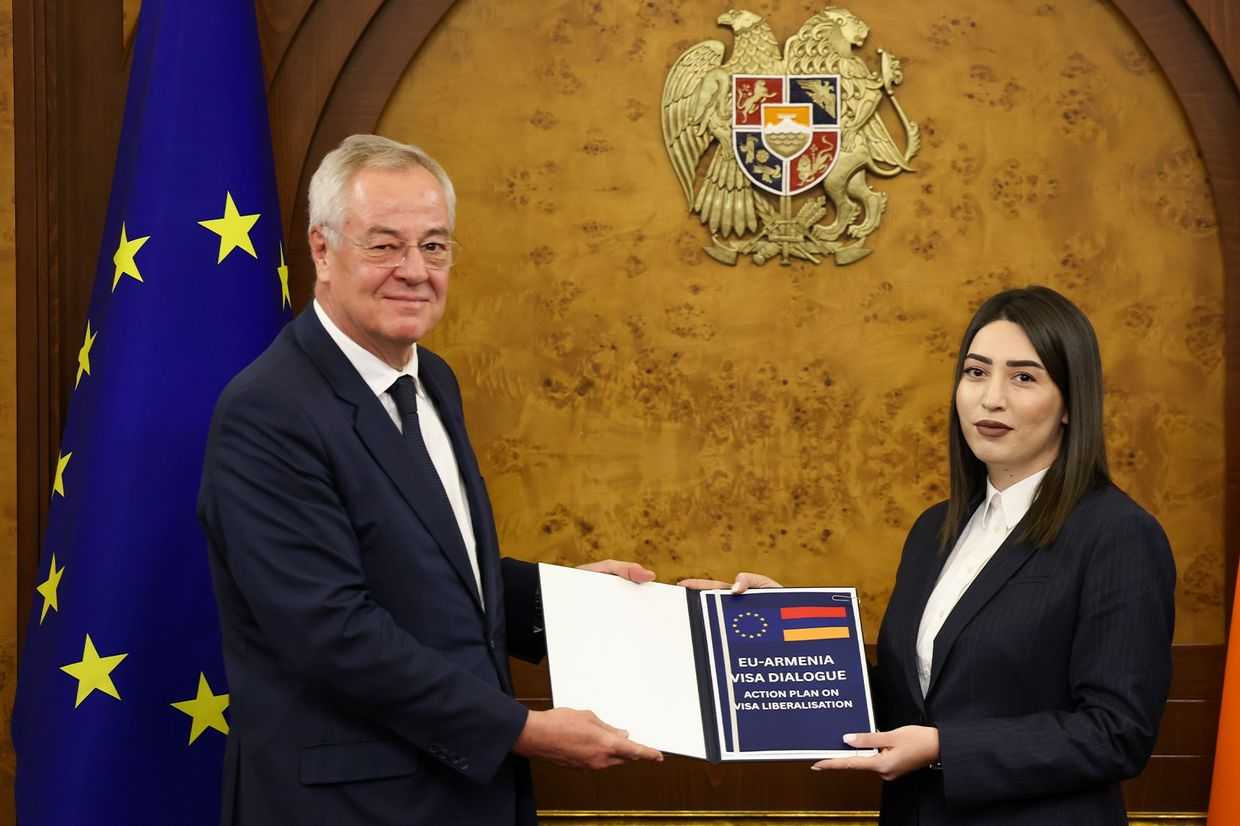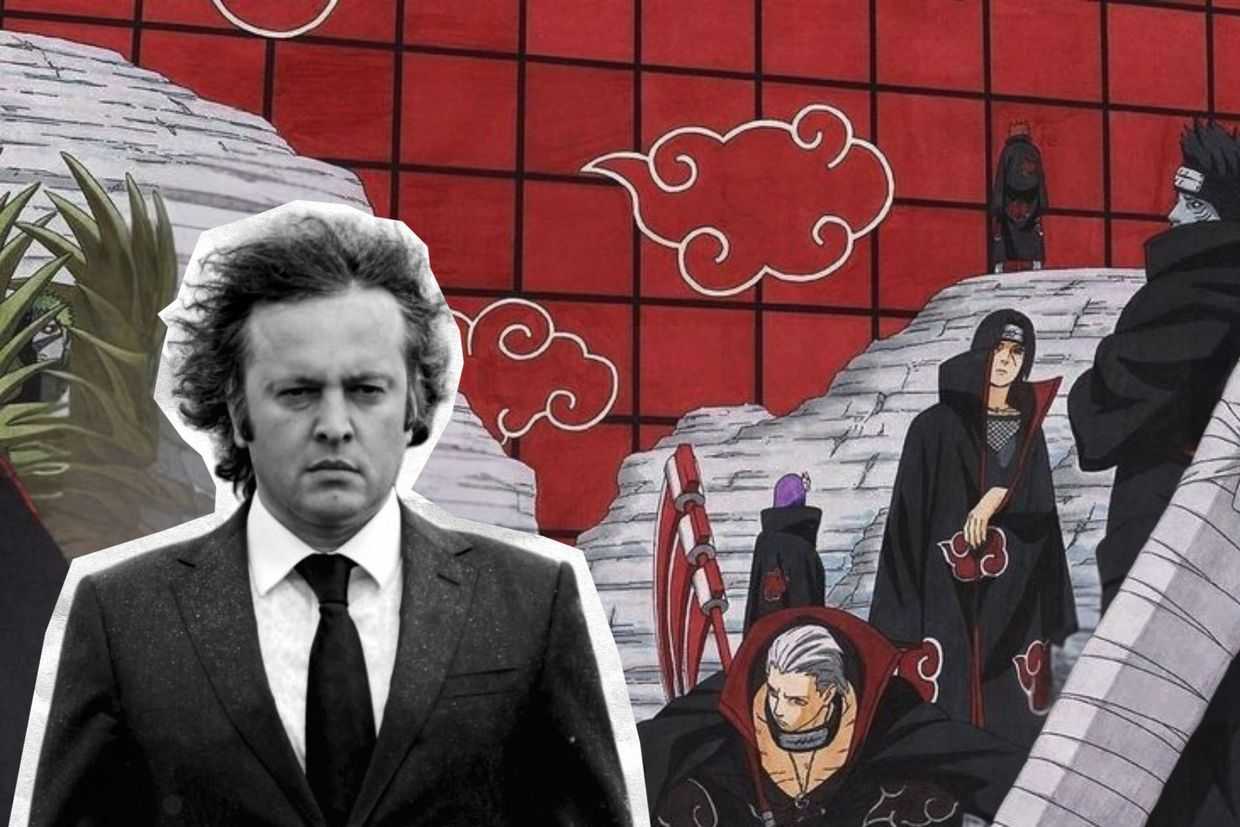
The deal that stopped Azerbaijan’s 44-day war against Armenia hints at peace via economic development. Does it convince the people most likely to be affected?
The original version of this article first appeared on Open Democracy Russia, on 1 February 2021.
‘Everyone here volunteered during the war. Even men in their sixties’, said Vardan Hayrapetyan, sitting in the spartan office of his hotel in southern Armenia, near the Iranian border. The hotel mostly caters to Iranian truck drivers who shuttle gas and other goods along the main road through Syunik province, a relatively narrow strip of land that is bordered by Azerbaijani territory on two sides, east and west.
‘Most of the men went to defend the border with Nakhichevan and the south of Karabakh’, Vardan added. ‘That’s where the battles were hardest.’
Nakhichevan is Azerbaijan’s exclave to the west of Armenia, while Nagorno-Karabakh is disputed territory to the east. For 44 days last autumn, Armenia fought a tooth-and-nail defence against Azerbaijan over Nagorno-Karabakh, home to thousands of Armenians (and before a cataclysmic war in the 1990s, to many Azerbaijanis as well). On 27 September, Azerbaijani forces launched a full-scale military offensive in Karabakh, forcing civilians from their homes with artillery and ground forces, and overwhelming Armenian defences with the help of Turkish-made drones.
Several months later, thousands of soldiers are dead or missing, and many civilians are displaced. Numerous war crimes have been documented. A Russian-brokered ceasefire agreement, announced in November, has tentatively paused the fighting, recognising Azerbaijan’s gains in Karabakh and the ‘buffer zone’ of territory that surrounds it. In the space of six weeks, Armenia’s gains from the war it fought with Azerbaijan in the 1990s have been largely undone.
For Armenia, the effective loss of Karabakh has caused a significant political crisis, with the country’s reformist government coming under huge pressure to win the war. Armenia’s current prime minister Nikol Pashinyan was elected in a landslide after the 2018 ‘Velvet Revolution’, but support for the once-popular revolutionary leader has wavered over the course of the war, which many Armenians have seen as existential. Azerbaijani troops are now stationed deep in the heart of what was once Armenian Karabakh and the ‘buffer zone’, and are visible on Armenia’s official borders. And suddenly, the once porous borders between Armenia, Nagorno-Karabakh and the buffer zone have hardened.
Economic development and the opening up of cross-border transport links, offer a potential route out of the crisis. This is a potentially attractive proposition for Armenia, a landlocked country whose borders have effectively only been open to two of its neighbours – Iran and Georgia – since the 1990s. Becoming a regional transit hub for the south Caucasus would turn defeat into an opportunity. But to reactivate transport routes cut off during the war in the 1990s will require unprecedented trust between Armenian and Azerbaijani societies. Nowhere is this more relevant in Syunik, since the November peace deal gives Azerbaijan a transport route through southern Armenia to its exclave of Nakhichevan.
In January, in their first joint meeting since the November agreement, the three leaders — Pashinyan, plus the Azerbaijani and Russian presidents Ilham Aliyev and Vladimir Putin — announced a trilateral working group to prepare the “unblocking of all economic and transport links” in the region. But who does this stand to benefit? As a recent analysis published by Euractiv suggests, Turkey and Azerbaijan are pushing for the corridor across southern Armenia, while Russia is keen to revive Soviet-era railway links with Iran.
To some, there is a sense that this development agenda, currently shrouded in diplomatic secrecy, is being imposed on Armenia from the outside – a view reflected on our journey through Syunik in late December 2020, where we found distrust and disappointment, as well as hope for the future.
On the road
The main road that links Armenia’s capital, Yerevan, to Iran makes its way south through Syunik province, via the towns of Goris, Kapan and Meghri.
Georgian and Iranian lorries hum along this muddy and winding route that runs directly along the Armenian-Azerbaijani border for a few kilometres, transporting liquified gas, construction materials and other goods. Goris, the town nearest the Lachin corridor, a mountain pass between Armenia and Karabakh, has become busy since the war. Once an aspiring tourist destination, it became the first secure place for civilians fleeing the conflict.
We were installed comfortably in a Lada driven by Henrik, a local who often uses this road. Until recently, it was the only cross-border route to stay permanently open to goods transport during the pandemic in all Armenia.
A few kilometres south of Goris, Henrik pointed out Shurnukh, a village that sits astride the road – and the border with Azerbaijan, now protected by Azerbaijani troops. Before the collapse of Soviet Union, Shurnukh was a largely Azeri-populated village on Armenian territory, whose inhabitants had to leave when the first Karabakh war started. ‘The village was taken by Armenians in the 1990s and now we are returning it’, Henrik said.
When we reached Shurnukh, around 20 residents were blocking traffic, in protest against the recent division of their village — and were demanding financial compensation so they can move to Russia. In December, Armenia’s prime minister acknowledged that there were ‘certain painful situations’ in Shurnukh and Vorotan, another nearby village affected by border demarcation with Azerbaijan, and offered financial support to people forced to leave their homes.
One of them is Armen Haroutsounyan, who settled here 30 years ago. Originally from Goris, Haroutsounyan used to work in a military factory, but is now a farmer. ‘It was better during the Soviet Union, but these houses were already Armenian back then’, he tells us. ‘Let the compensation money [for the loss of property] go to those who were wounded. I’m going to burn my house down.’
In early January, the Syunik regional administration stated that 11 houses in Shurnukh were situated on the Azerbaijani side of the road. The owners have been given temporary shelter.
After Shurnukh we came to a Russian military checkpoint — a tent manned by four soldiers that monitors the road south to Kapan, the next town after Goris. According to both modern GPS and Soviet-era maps, the next three kilometres of road is part of Azerbaijani territory, now under Azerbaijani control since the war in the autumn. In late December, a ‘Welcome to Azerbaijan’ sign appeared on the road. Because of the risk that drivers will be fired on by Azerbaijani military personnel, the Armenian security services set up an emergency hotline. ‘Normally, it is the fighting that determines the territories, not the agreements’, said Henrik as we passed.
A few kilometres later, when we reached Kapan, Syunik’s regional capital, Azerbaijani troops were visible from the edge of town, on the other side of the airport.
‘The Azeris continue to behave in an offensive manner’, Vardan Hayrapetyan, the hotel owner, later told us. ‘From Goris to Kapan there are Azeri soldiers. We just do not see an end to the war.’
‘Syunik is the backbone of Armenia’
After Kapan, we reached Meghri, the town closest to the border with Iran. In the central square, in the middle of winter, only one cafe was open. Assya Sarkissian, the owner, was born in Meghri and has run the cafe since retiring from her job as a border guard for Russia’s Federal Security Service (FSB), which has controlled Armenia’s borders with Turkey and Iran since the 1990s.
‘Syunik is the backbone of Armenia’, Sarkissian told us, explaining that the region was struggling. ‘Economic activity decreased during Covid, but war took over and it affected us more.’
Like many locals, Sarkissian was particularly worried about security. ‘I have not used the road to Yerevan since the war’, she said. ‘We have been afraid since the 1990s: the Azeris are unpredictable. Who will guarantee our safety on the road?’
Hayrapetyan’s hotel is in Meghri, and he shared Sarkissian’s concerns. ‘It’s been agreed that the Russians will guarantee the security of Azeri trucks traveling through Meghri. Who is going to guarantee the security of Armenians taking the road to Yerevan, through Nakhichevan?’ he said, referring to Pashinyan’s recent hint that he wants the road that once linked Yerevan to Armenia’s Iranian border through Nakhichevan to be reopened.
In January, Mane Gevorgyan, the Armenian prime minister’s press secretary, announced that, as part of the Moscow diplomatic discussions, the sides were discussing the possibility of letting Armenia use an existing railroad that runs through Nakhichevan to the southern end of Syunik province. ‘I should emphasise that in Moscow there is no signature on any document on the Karabakh issue or any territorial issue’, Gevorgyan said at the time.
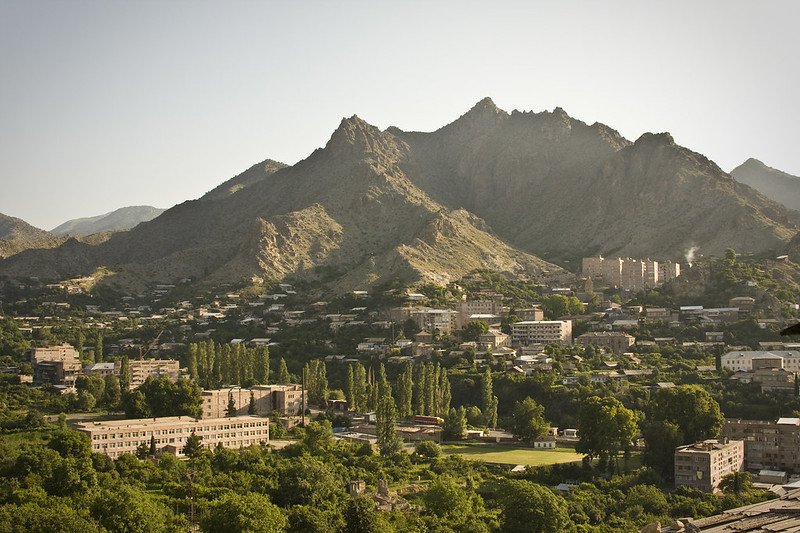
This is not the first time Syunik – and Meghri, in particular – has been in the spotlight. Gayane Ayvazyan, a researcher who studies Armenian perspectives on Nagorno-Karabakh, told us that Meghri has been central to the Armenia-Azerbaijan conflict since peace talks hosted in the US at Key West, Florida, in 2001.
‘The purpose back then was that Armenia would hand over Meghri as a territorial swap in exchange for the Soviet-era Nagorno-Karabakh Autonomous Region. Armenia and Azerbaijan initially agreed, but Heydar Aliyev rejected the deal in the end’, Ayvazyan said. ‘I remember that Meghri residents rejected the idea completely.’ A later peace plan, the Madrid Principles, removed Meghri from the discussion, Ayvazyan added.
Secure borders would enable local and national economic development, with Meghri acting as a regional trade hub. As well as providing a transit point for gas from Iran, Meghri’s tropical climate makes for fertile agricultural land, producing kiwis, figs, pomegranates, persimmons and dried fruits that supply the rest of Armenia and are exported to Russia. The region is also a source of copper ore.
Meghri has long been viewed as key to strengthening economic ties with Iran. In 2017, Armenia’s then-prime minister Karen Karapetyan announced that a free economic zone would be established in Meghri. The promised foreign investment never materialised, and in 2019 Armenia’s post-revolution government opened a corruption investigation into the privatisation of public land used for the zone.
‘We had a long period of lost opportunities’, said Vahagn Khachatryan, an economist and former mayor of Yerevan. Armenia has three free economic zones, which Khachatryan believes could be used to stimulate local production. Meghri could be especially attractive to joint Iranian-Armenian companies, since both countries are participants in the Eurasia Economic Union.
Khachatryan said that other priorities should be to build a copper smelting facility in Meghri, so that ore mined locally can be processed rather than exported, and to develop hydroelectric infrastructure on the Araks river, which runs along the Iranian border. Armenia’s deputy prime minister, Mher Grigoryan, told openDemocracy by email that ‘a new modus operandi for the Meghri FEZ [free economic zone] is being developed by Armenia’s Ministry of Economy, and will be announced in the coming days.’
Khachatryan, who stood for parliament in 2017 on a platform that advocated for peace and reconciliation with Armenia’s neighbours, is more circumspect. ‘I realise it’s not very easy, but Armenia has to persuade its neighbours that we just want to live in peace and in economic collaboration, which would be mutually beneficial.’ Armenian society is still in shock from the war, he acknowledged, and needs time to prepare for peace and commerce.
An unclear agenda
The proposed transport corridor linking Azerbaijan with its exclave of Nakhichevan will run from east to west across Syunik, in southern Armenia. But aside from the problem of public support in Armenia, it is also unclear how the corridor will work in practice, and how it will comply with international law, says Taline Papazian, a professor at Aix-Marseille University in France, and head of the Armenia Peace Initiative NGO.
“Who will guarantee the road’s ongoing construction maintenance and legal status once completed? Who will control the road, and what currencies will be permitted to trade? What types of goods, weapons and personnel will be allowed to move along it? Perhaps most importantly for Syunik: will it be connected to Meghri or any other Armenian towns?” said Papazian.
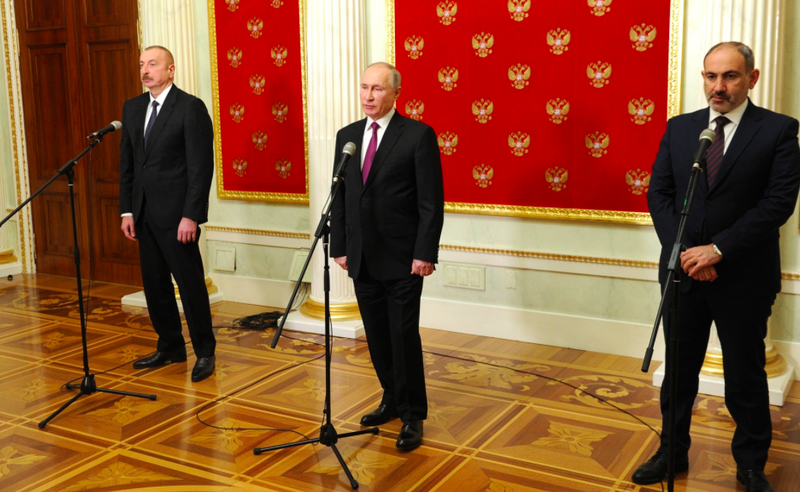
The answers to these questions are likely to be determined, at least in part, by Russia, the main broker of the peace deal. ‘We understand that the priority for Russia is to open roads and railroads to allow rapid good transportation to open up the region’, said Papazian.
More immediately, however, development will require good relations and closer cooperation between Armenia and Azerbaijan. ‘Without this, the expected effect of opening up – and this is for all the actors concerned – will not take place’, said Papazian.
Armenia’s deputy prime minister declined to comment on specific plans for upcoming meetings with Azerbaijani and Russian representatives. ‘The goal is to find the best and most efficient formula for cooperation that will eventually contribute to increasing exports and promoting investment, and reducing the prices of imports’, Mher Grigoryan said. ‘At this stage, we are considering and evaluating all possible options.’
Gerard Libaridian, an academic and former diplomat, told openDemocracy that transport routes are seen by Russia, Turkey and Azerbaijan as the most important issue, which explains their prominence in the November agreement. Issues such as the future status of Karabakh and the fate of Armenian prisoners of war have so far been relegated to second place in the negotiations.
More important for Armenia, said Libaridian, a former adviser to the country’s first president Levon Ter-Petrosian, was the question of ‘what to do about the defeat and Armenia’s decreased level of sovereignty?’ For Armenia, any potential economic opportunities should be seen in the ‘political-strategic context within which these have become possible’, he said.
A crisis roadmap developed by Armenian civil society representatives in December focused on the aftermath of war in Armenia, and suggests that the Nakhichevan-Azerbaijan highway should be negotiated over ‘in the last place’. Libaridian said that the current situation can best be characterised as the absence of war and a ‘peace process’ that is more imposed than negotiated.
‘Has the revolution reached Syunik?’
In Syunik, anxiety over what comes next is tempered by a sense of self-sufficiency, in relation to Armenia’s urban centres. Some residents joked to us that they were still waiting for the 2018 revolution — led by the now prime minister Nikol Pashinyan – to reach the region. (In 2018, for example, voters in the regional capital Kapan elected an independent mayor instead of a candidate backed by Pashinyan.)
Several people we met expressed concern that the interests of people in Syunik – which are particular, due to their proximity to several borders –- were being overlooked by Armenia’s leaders, and that some form of cohabitation with Azerbaijan was necessary. ‘You have to stop panicking and be patient to understand someone who lives near the borders’, said Sarkissian, the cafe owner in Meghri.
Hayrapetyan, the hotel manager, was more forthright. ‘War is a problem of elite politics’, he said. ‘We care about our children just as the Azeris care about theirs. I was a construction engineer and I worked with Azeris. The people of Yerevan do business abroad with the Azeris in Russia [but] we have to live with our neighbours, we have to build peace. We have already had 30 years of tension. We can’t go on like this for another 30 years.’
Henrik, our driver, put it even more bluntly. ‘We receive less aid than Karabakh.’ Two of his brothers fought at Jabrayil, a part of Karabakh occupied by Armenians until a particularly fierce battle in October.
Tatevik Hovhannisyan, a political scientist who comes from Kapan, told openDemocracy that Armenia’s government failed to keep the public adequately informed about the war and its consequences, which has led to panic and distrust in Syunik.
‘There is a lack of communication between the government and institutions, [or with] local elected authorities, as well as with the general public,’ she said. ‘Citizens aren’t told what to expect and what to do.’
In mid-January, the Armenian government set up an inter-ministerial task force to ‘manage the activities of discovering and operatively addressing the existing and possible problems in Syunik’ after the war. Only one of 16 members of the task force, Syunik’s recently-appointed governor Melikset Poghosyan, comes from the region. The rest are deputy ministers or officials from other state bodies.
‘Nobody in Syunik knows about this new body,’ said Hovhannisyan. ‘This speaks volumes about the lack of communication, too.’
A spokesperson for the Syunik regional administration declined to comment on the situation in the region, only stating that many issues had become sensitive.
‘When there is a significant change in life, of course there are worries’, said Karen Hambardzumyan, a former Syunik governor who is now an MP with Armenia’s governing My Step Alliance. ‘In general, however, I can say that Syunik is neither restless, nor scared, nor depressed.’
End of the road
As the road from Yerevan reaches the Iranian border, it meets the Araks river, which flows close to the frontier. Overlooked by a series of watchtowers, the river – which runs from Turkey through Nakhichevan and along the border with Iran – is protected by a fence originally built to prevent people from escaping the Soviet Union. Before the pandemic, local Armenian farmers would sell their produce in the Iranian market immediately on the other side of the border.
In a canteen on the central square of Agarak village, site of the border crossing into Iran, and close to Azerbaijan’s exclave of Nakhichevan, Anna Vardanyan prepares lunch for lorry drivers passing through. ‘No matter what borders we end up with, it will still be me washing the dishes’, she told us.
‘Since the revolution, Pashinyan has been looking out for ordinary people’, Vardanyan continued. ‘Everyone gets their retirement paychecks and then, they are able to pay their utility bills. Before the revolution, we would have to pay our taxes without our retirement pensions being paid for months.’
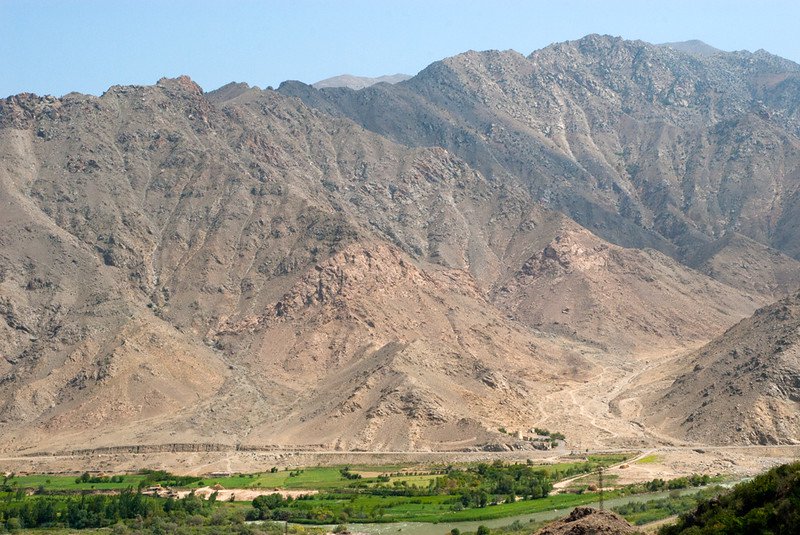
In a separate room of the restaurant, three men are enjoying lunch while smoking. Aram Hayrapetyan, Gor Lachinyan and Leo Zakaryan, Armenians in their early 20s, transport charcuterie from Kapan to other parts of Syunik for a living. They also fought in Jabrayil during the war. ‘We use the Goris-Kapan road even if it is dangerous. Business keeps going’, said Hayrapetyan.
In December, opposition parties held a mass rally in Yerevan calling for prime minister Pashinyan to resign, in protest at the November peace agreement. People in the cafe were scathing about the protesters.
‘Aren’t they ashamed?’ Vardanyan said. ‘It was previous governments who failed to prepare us for these drones [supplied by Turkey to Azerbaijan]. There was nothing the Armenian government could do about them. Pashinyan did well to stop what would have been a bloodbath.’
Zakaryan was more direct. ‘Protesters are drowning the whole country’, he said.
With a snap parliamentary election announced for later this year, Syunik residents will soon have their chance to pass judgement on Pashinyan — and the post-war economic development agenda..
Back in Meghri, Assya Sarkisyan made a plea for unity. ‘What concerns me the most is the fight for the seat of prime minister. Let’s be smart, let’s stop these power struggles. We need someone who is strong in their actions and their strategy.’
Additional reporting by Knar Khudoyan. Interpretation by Araks Sahakyan.


